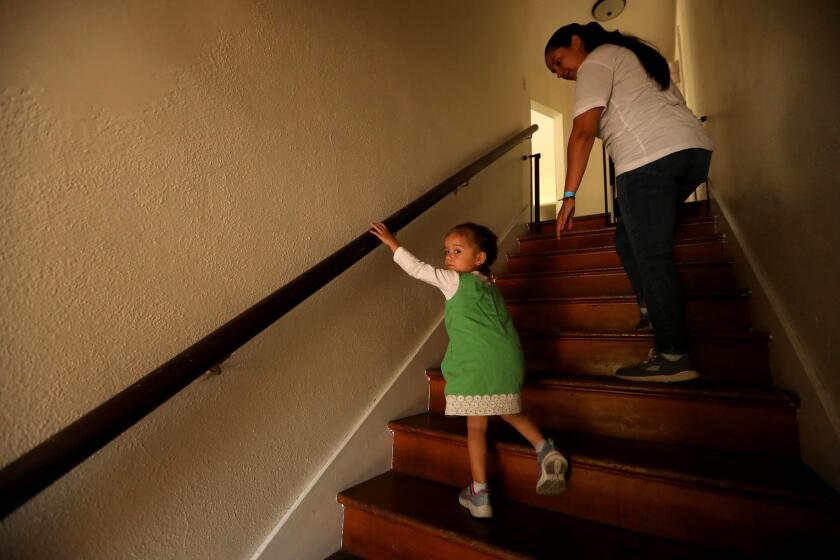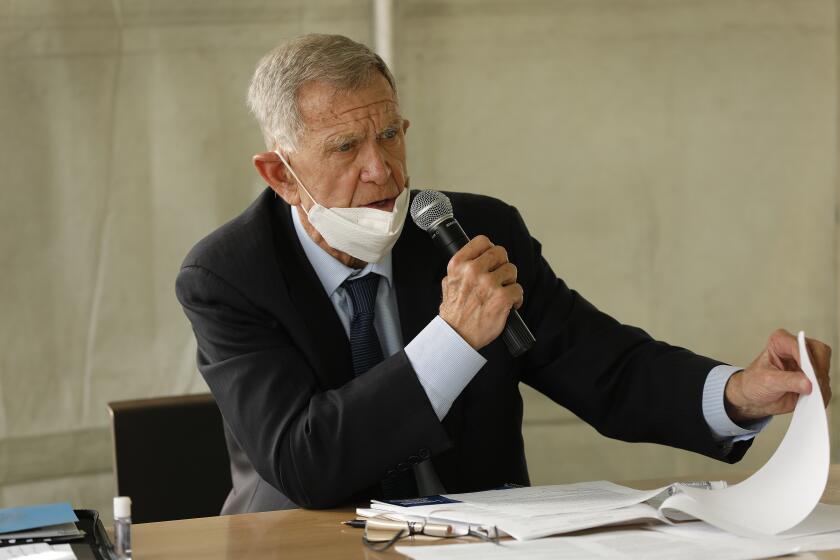L.A. Curtails Demolitions, Offers Plan to Save Housing
Six months after a public outcry over the city-ordered destruction of about 200 dilapidated homes, the controversial demolitions have been heavily curtailed by Mayor Tom Bradley and the city is promoting renovation loans and launching a $2-million home buyer plan to save such housing.
Under the revamped policy, Deputy Mayor Ed Avila said Thursday, the city since January has demolished about a dozen badly deteriorated houses, while roughly 20 homes have been torn down by their owners under city orders.
That is a dramatic drop from the 135 homes destroyed in mostly low-income neighborhoods by this time last year under two programs: Operation Knockdown, a program intended to rid neighborhoods of “crack” dens that spring up in empty houses, and a companion effort aimed at removing unsightly “nuisance” homes.
The Times reported last January that Operation Knockdown, despite its original intent, had destroyed neglected homes that were not known crack dens, and that homeless squatters were turned onto the streets by the city in some of the demolition cases.
Moreover, some demolished homes were repairable, making Los Angeles one of the few metropolitan areas in the country that was destroying usable dwellings amid a severe housing shortage.
Michael Bodaken, housing coordinator for Bradley, said of the city’s new policy: “It’s going to be difficult to save all the homes because not every owner is going to cooperate, but you really have to try.”
The new policies were recommended by the mayor’s Save Our Housing Task Force after being proposed by City Councilman Zev Yaroslavsky and South-Central Community Development, a consortium of nonprofit groups dedicated to rebuilding the neighborhoods of South-Central Los Angeles.
Under the policies, most of which already have been implemented, the city is:
- Setting aside $2 million from the Community Redevelopment Agency to be used by nonprofit neighborhood groups that will buy homes from negligent owners, renovate them and sell them to low-income families. Three nonprofit groups--two in South-Central and one in East Los Angeles--are expected to be named to operate the program within the next two weeks.
- Earmarking up to $7 million in state bond funds to “write down” the selling cost of the renovated homes, thus making them affordable to low-income buyers.
- Launching an aggressive marketing program, to be run by the nonprofits, aimed at low- and middle-income owners of neglected homes who qualify for low-interest renovation loans. This year, $4.7 million is available under the little-known city loan program, which has existed for several years, Bodaken said. The $4.7 million is in addition to the $2 million set aside through CRA.
- Working on a plan under which absentee owners who refuse to comply with city orders to bring their homes up to code will be ordered to a hearing before the city attorney. Absentee owners, who are believed to own as many as 350 of the city’s 500 to 700 neglected empty homes, will be urged to apply for renovation loans before being prosecuted for code violations. Moreover, they may face stiff new code violation penalties now under discussion, Bodaken said.
Yaroslavsky, who last January vehemently attacked the policies that led to the destruction of 200 homes in 1989, said Thursday that the city’s new approach “is a victory for poor people.”
“Operation Knockdown was on its face so ill-advised, and it just hit people the wrong way that the city had a policy to destroy low-income housing,” Yaroslavsky said. “This set us apart in a very negative way from the rest of U.S society. Now we are all talking the same language.”
Avila said a limited number of abandoned, dilapidated houses will continue to be demolished by the city or by homeowners under city orders, “but the review process that we adopted shortly after this came out in the paper is so tight that no one can really have a problem with what is torn down.”
Avila said that when a home is proposed for demolition, the Department of Building and Safety informs him, Bradley, Bodaken, the local City Council member and the Los Angeles Police Department of the home’s threatened status, “and we make sure it’s not just an excuse to get rid of a nuisance that is really salvageable.”
“I literally go in my car and look at the home to see that it is not repairable,” Avila added.
The new policies are receiving wide acceptance in South-Central Los Angeles, the hardest hit by last year’s demolitions, said Juanita Tate, a spokeswoman for Concerned Citizens of South-Central.
Tate, who was a member of Bradley’s Save Our Housing Task Force, said most of the new policies were proposed about three months ago by South-Central Community Development.
“This has all been done in about 90 days, and that is real progress in the city of Los Angeles,” Tate said. “It’s working because there is no tug of war going on here, and because when it comes to low-income housing, everybody finally agrees on what needs to be done.”



